Nassif House dominates the historical landscape of the Al-Balad district in Jeddah, a monumental structure completed in 1881 that houses an extraordinary 106 rooms within its walls. This architectural wonder belonged originally to the prominent Nasseef family before gaining royal significance when King Abdulaziz Ibn Saud selected it as his residence following his arrival in Jeddah in December 1925. Residents know it affectionately as "the house with the tree" – a fitting nickname that acknowledges the singular neem tree that stood alone in Jeddah's landscape until the 1920s.
Visitors to Nassif House Museum encounter a cultural repository that has evolved dramatically since its official designation as a museum in 2009. Situated within Al-Balad's UNESCO World Heritage boundaries, the museum houses an exceptional array of historical treasures – vintage photographic collections, traditional domestic implements, and cultural artifacts that collectively narrate Jeddah's colorful past. The museum welcomes guests without admission charges and provides guided explanatory tours in Arabic and English. These tours allow exploration of the building's magnificent wooden staircases, central courtyard, and detailed Arabic calligraphy – all hallmarks of the distinctive Ottoman Turkish architectural tradition that defines this remarkable structure.
Nassif House chronicles a remarkable tale beginning in the late 19th century, etching an indelible chapter in Jeddah's architectural legacy. Situated along Suq al-Alawi, old Jeddah's principal thoroughfare, this historic dwelling encapsulates the city's intricate cultural mosaic and distinguished royal associations.
The grand edifice emerged from stone and vision in 1872 under Sheik Omar Effendi al-Nassif's meticulous direction. Sheik Omar was no ordinary patron—beyond his status within a prosperous merchant dynasty, he wielded authority as Jeddah's governor during this consequential period. This architectural endeavor proved exceedingly ambitious for its era, demanding nearly nine years of craftsmanship before reaching completion in 1881.
Strategic placement along old Jeddah's central avenue underscored the Nassif family's elevated social prominence within the community. The residence materialized with deliberate grandeur, mirroring both the family's considerable fortune and the region's architectural heritage. The structure functioned primarily as the Nassif family abode throughout its formative years, ascending to recognition as one of the district's most esteemed dwellings.
Nassif House acquired historical significance, transcending architectural merit, in December 1925. Following Jeddah's siege, King Abdulaziz Ibn Saud, modern Saudi Arabia's founder, entered the city and designated Bayt Nassif as his personal quarters. This pivotal occasion marked a decisive juncture in Saudi chronicles, as the King's Jeddah conquest represented a critical advance toward Saudi Arabian unification.
During this momentous interval, the dwelling transformed from a family residence to a royal headquarters. King Abdulaziz established it as his primary accommodation during his initial sojourns in the city. The building further served as a significant diplomatic forum where the monarch received visiting dignitaries, international ambassadors, and delegations from multiple nations. Within these very walls, King Abdulaziz attended to citizen petitions and sanctioned numerous consequential agreements, further solidifying the structure's position in Saudi Arabian historical narratives.
The property remained under Nassif family stewardship until 1975, when a profound transition unfolded. Muhammad Nassif implemented the visionary decision to repurpose the ancestral home as a private library. This literary sanctuary expanded considerably, eventually amassing a remarkable collection of 16,000 volumes, accessible to any visitor, effectively establishing one of the region's inaugural public reading sanctuaries.
That same year witnessed the Saudi government's recognition of the building's historical significance through its purchase and formal designation as a heritage landmark. Following the acquisition, authorities initially preserved its library function before subsequent repurposing. The extensive literary collection that once populated its chambers ultimately transferred to King Abdulaziz University's central library after Muhammad Nassif's passing, where these scholarly resources continue serving academic inquiry and public enlightenment.
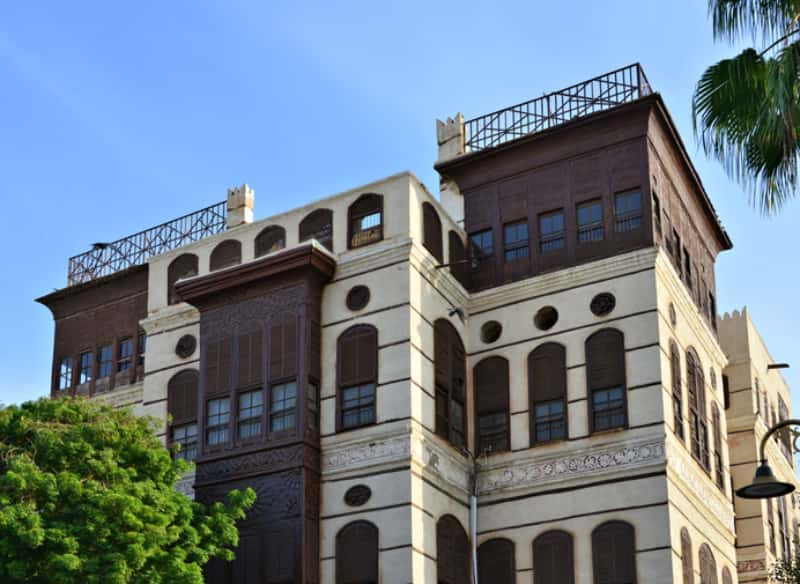
Nassif House stands as an architectural achievement that marries diverse cultural influences, ingenious design principles, and masterful craftsmanship that has endured across generations. This extraordinary edifice ranks among Jeddah's most distinctive landmarks, epitomizing the zenith of traditional Red Sea coastal architectural excellence.
Nassif House retains its authentic Ottoman-style architectural character despite multiple renovation efforts throughout its history. The structure showcases a remarkable amalgamation of Ottoman Turkish design elements harmoniously blended with traditional Hijazi craftsmanship techniques. Visitors encounter elaborate Arabic calligraphic inscriptions and meticulously carved wooden doorways—distinctive characteristics of this architectural tradition. The building's street-facing elevation presents two expansive bay windows extending across two levels above the primary entrance, elements now recognized as quintessential features of classical Jeddah architecture.
The structure encompasses 106 rooms organized around a central hallway following an asymmetrical floor plan. While appearing as a four-story building from certain vantage points, the structure actually comprises seven distinct levels (depending on how mezzanine floors are calculated). The building utilizes two principal entrances—the main portal faces northward while a secondary western entrance historically served female occupants and visitors. Guests ascend a modest staircase to an elevated platform before entering a spacious reception hall (dihliz) that leads into the central space.
Nassif House exemplifies regional construction methodologies through its use of locally harvested coral stone extracted from Red Sea beds complemented by imported timber varieties chosen for structural integrity and visual appeal. These coral blocks receive a coating of nourah (plaster) providing both thermal insulation and aesthetic enhancement. Wooden components, particularly teak elements, fulfill critical structural functions—wooden reinforcement chains embedded within wall sections at measured intervals distribute load forces and ensure structural stability.
The building's most remarkable feature remains its exceptionally broad staircase with unusually shallow treads, purportedly designed to accommodate camels transporting provisions to the fifth-floor kitchen facilities. The uppermost portion features a lightweight pavilion-style construction positioned on the middle eastern section, functioning as a resting and sleeping quarter strategically placed to capture cooling breezes at that elevation. The structure also incorporates distinctive rawasheen (enclosed wooden balconies) maintaining occupant privacy while facilitating air circulation and filtered natural illumination. Underground cisterns beneath the ground level once collected rainwater while simultaneously regulating interior temperatures.
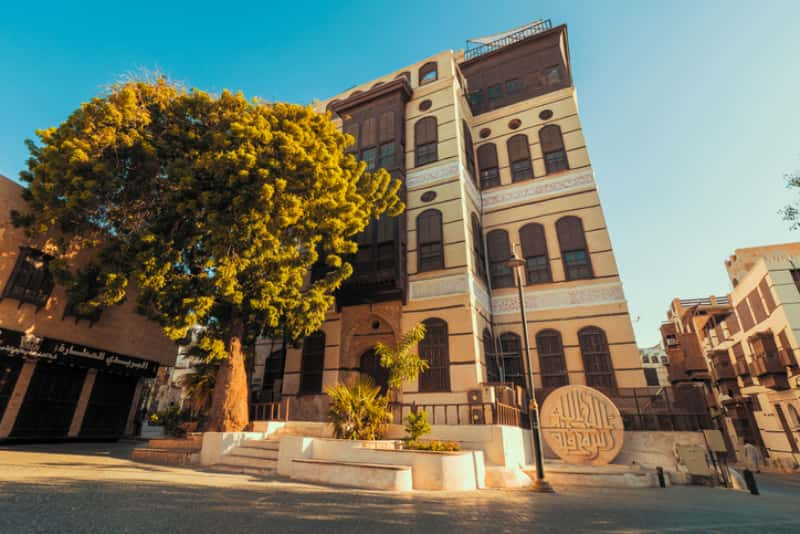
Nassif House chronicles a remarkable evolution beyond its architectural significance. The historic structure gradually morphed from family dwelling to cultural institution, now standing as a guardian of Jeddah's heritage legacy.
Muhammad Nassif initiated the first dramatic cultural shift in 1975, repurposing the ancestral home into a private library. This decision reflected an exceptional dedication to knowledge dissemination and public education. The library flourished under Muhammad's care, amassing an extraordinary collection of 16,000 literary works. These intellectual treasures remained accessible to all visitors of the house, effectively establishing one of the earliest public reading spaces in Jeddah's history.
The building underwent its second major metamorphosis in 2009 when it officially became a museum and cultural center. This transition preserved its architectural splendor while creating a dedicated space for cultural education and appreciation. Modern visitors discover a wealth of historical artifacts showcasing the region's rich past. The collection features vintage photographs, ancient pilgrim route maps from Syria, Yemen, and Egypt, and a historic chart depicting Prophet Muhammad's migration path. Additional displays showcase jewelry pieces, early electronic devices, domestic utensils, and household objects from earlier eras.
Nassif House Museum functions well beyond a static display space. The institution regularly presents specialized exhibitions and scholarly lectures by historians and subject experts from across the globe. Cultural seminars and participatory workshops occur throughout the calendar year, drawing consistent visitor engagement. Saudi Founding Day celebrations attract particularly notable attendance. During these special occasions, students from the Royal Institute of Traditional Arts participate actively, offering detailed explanations about traditional artistic techniques and architectural elements found throughout Jeddah's historic structures. Through these vibrant programming efforts, Nassif House serves as a dynamic cultural nexus linking Saudi Arabia's historical legacy with contemporary society.
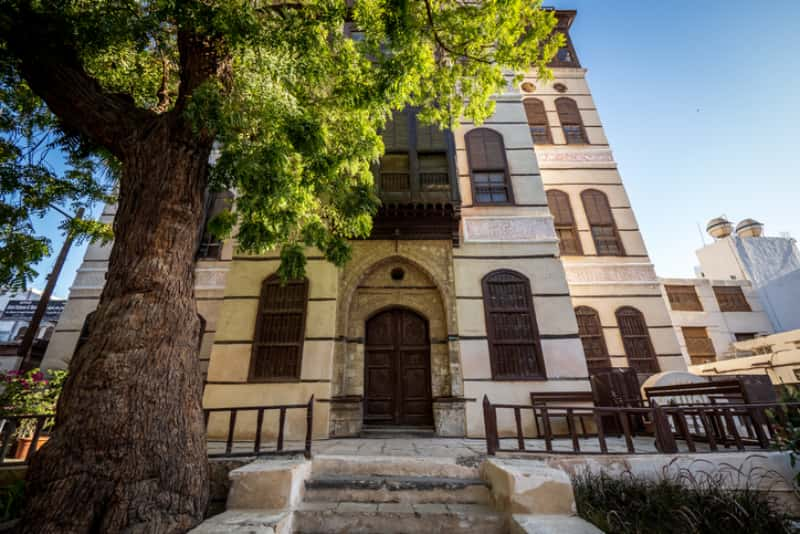
Nassif House Museum greets heritage enthusiasts with generous operating hours and zero admission costs. This remarkable cultural landmark presents visitors an opportunity to delve into Saudi heritage amid the atmospheric surroundings of Old Jeddah.
The museum maintains extensive daily operations from 8:00 AM to 11:55 PM Monday through Saturday. Sunday visits follow a split timetable, with morning hours from 8:00 AM until noon, followed by evening access from 6:00 PM until midnight. Most appealing to travelers and local visitors alike, entry to the museum remains completely free for all guests. Most visitors allocate approximately 2-3 hours for a thorough exploration of the premises, though some guests report completing their tours in slightly less time while still absorbing the essential historical elements.
Nassif House occupies a distinguished position within Al-Balad, the historic quarter of Jeddah recognized as a UNESCO World Heritage Site. The precise location sits on Al Dhahab Street in the ancient town center. Access to the museum proves straightforward through multiple transportation options - visitors already in Al-Balad may walk approximately 10 minutes from the district center, while others might utilize public buses or ride-hailing services including Uber and Careem. Those arriving by private vehicle will find sufficient parking facilities within reasonable proximity.
The museum's central location allows seamless exploration of surrounding cultural sites:
Dining options abound within accessible distance, including India Gate Restaurant (2.3 km), Sapphire Family Restaurant (2.3 km), and Super 2Go Resto Cafe (2.4 km).
Visitors benefit tremendously from the complimentary guided tours conducted in both Arabic and English. These educational excursions provide essential historical context and architectural insights otherwise easily overlooked. While impromptu visits remain welcome, securing pre-arranged guided tours through official tourism channels guarantees a more structured experience.
Morning hours and late afternoons present optimal visiting conditions, offering pleasant temperatures and superior lighting for photography enthusiasts. Early arrivals typically encounter fewer fellow visitors, allowing for more intimate engagement with the historical space. Particular highlights include the panoramic vistas from the rooftop terrace and the sensory exhibition featuring traditional scents and spices characteristic of historical Hijazi households.
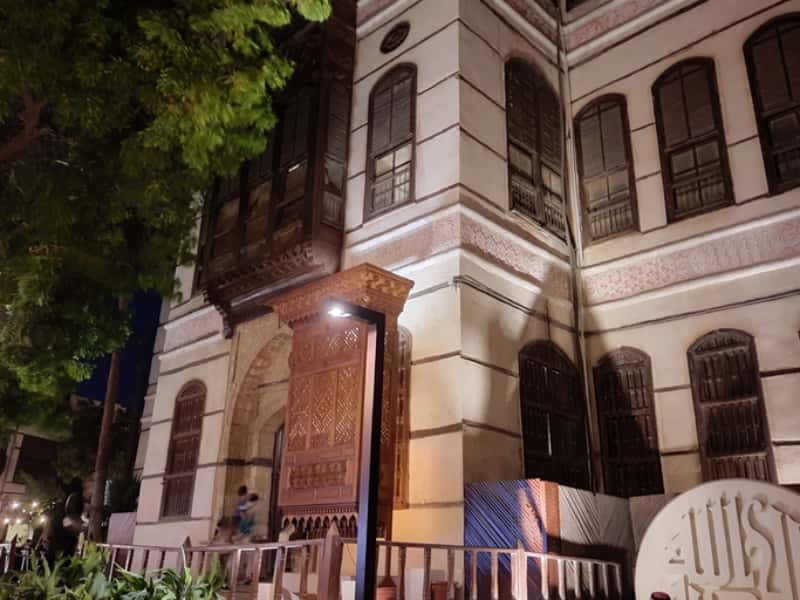
Nassif House Museum stands unrivaled as a monument to Jeddah's cultural legacy and architectural genius. This magnificent edifice has witnessed remarkable transitions throughout its 140-year existence – first serving as an elite family dwelling, then becoming royal headquarters, later evolving into a knowledge sanctuary housing 16,000 volumes, and finally emerging as the cultural jewel visitors explore today. Those who walk through its doorways encounter firsthand the exceptional Ottoman-Hijazi architectural tradition with its distinctive coral stone construction, notably wide staircases, and elaborate wooden embellishments.
Situated within Al-Balad's UNESCO World Heritage boundaries, the museum places visitors at the historical core of old Jeddah, encircled by bustling traditional marketplaces and age-old gateways. Its policy of free admission coupled with extensive operating hours renders this cultural treasure universally accessible, while expert-led tours conducted in both Arabic and English languages unveil profound insights regarding the structure's historical importance.
Far beyond mere architectural magnificence, Nassif House functions as a vibrant link connecting Saudi Arabia's past with its present reality. Within its 106 rooms, vintage photographic collections, ancient cartographic treasures, and traditional domestic implements narrate countless tales of life in historic Jeddah. This museum delivers more than fragmentary glimpses of bygone days – it offers complete immersion into another era.
Enthusiasts of architectural history, cultural heritage explorers, and those simply seeking enriching Jeddah experiences will find Nassif House Museum worthy of priority status on their itineraries. Few opportunities exist elsewhere to traverse the same hallways once graced by King Abdulaziz Ibn Saud and to stand where pivotal moments in Saudi Arabian history unfolded.
Q1. What is the historical significance of Nassif House Museum?
Nassif House Museum, completed in 1881, was originally a royal residence for King Abdulaziz Ibn Saud. It played a crucial role during the unification of Saudi Arabia and later became a public library before its transformation into a museum in 2009.
Q2. What architectural features make Nassif House unique?
The museum showcases a blend of Ottoman and Hijazi influences, featuring seven floors with 106 rooms. It's constructed using coral stone and teak wood, and includes unique elements like an unusually wide staircase and a rooftop pavilion.
Q3. What can visitors expect to see at Nassif House Museum?
Visitors can explore vintage photographs, traditional household items, ancient maps, and artifacts reflecting Jeddah's history. The museum also hosts cultural events, lectures, and exhibitions throughout the year.
Q4. When is the best time to visit Nassif House Museum?
Early mornings or late afternoons are ideal for visiting, as the weather is more pleasant and lighting conditions are perfect for photography. Arriving early also helps avoid crowds for a more intimate experience.
Q5. Is there an admission fee for Nassif House Museum?
No, entry to Nassif House Museum is completely free for all visitors. The museum is open daily, with extended hours from 8:00 AM to 11:55 PM on most days, making it easily accessible for tourists and locals alike.
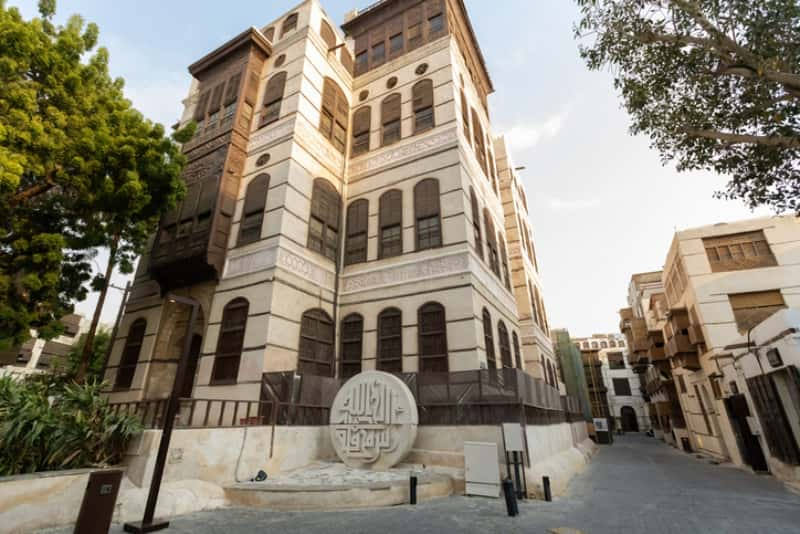
Find Related Tours


© Copyright 2024 Go Saudi Arabia Trips. All Rights Reserved.